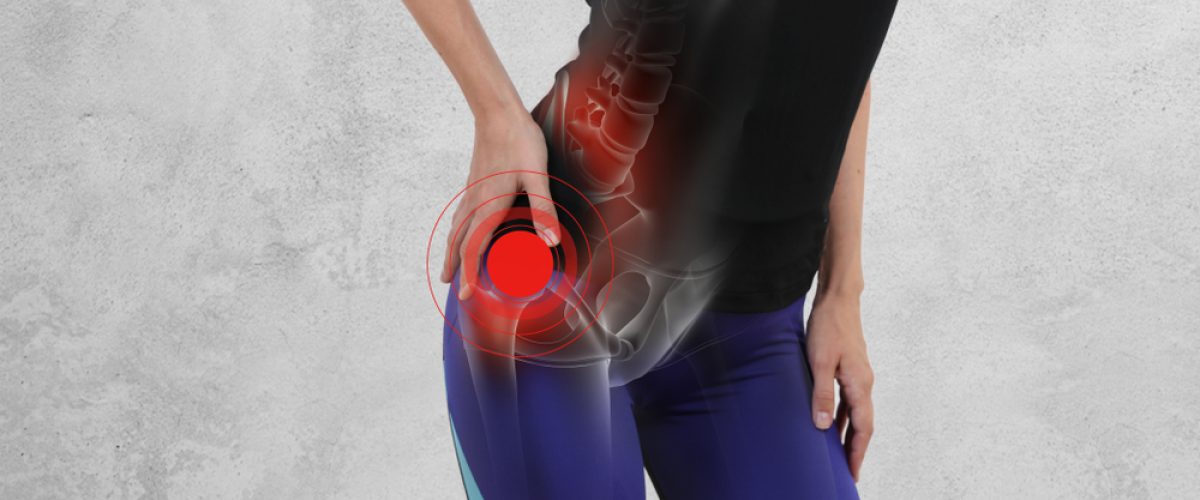Joint pain is an uncomfortable condition that can make it hard for you to enjoy the activities you love. Joint pain isn’t something we have to learn to live with as we get older. There’s a lot we can do to improve joint health! Nutrition, stress management, and exercise can relieve the inflammation that causes joint pain and get you back to feeling your best.
Today, we’re going to reveal eight of the best exercises for joint pain relief. If your joint pain is severe, we recommend speaking with a doctor at Link Primary Care before starting a new exercise routine. But if you’re looking for preventive steps or strategies to manage mild joint pain, you’re going to find this list helpful and informative.
Whether it’s due to age-related wear and tear, injuries, or medical conditions, finding effective ways to alleviate joint pain is crucial for maintaining a good quality of life. The following exercises target your joints in different ways by promoting joint mobility, strengthening supporting muscles, and reducing inflammation.
At Link Primary Care, we’re here to promote general wellness in the St. Louis community. If you’re looking for effective solutions to joint pain, including exercises for joint relief, schedule a consultation with one of our concierge doctors.
Common Causes of Joint Pain
There are many reasons why we experience joint pain. Since joint pain can be a symptom of many medical conditions, it’s important to get checked out by a medical practitioner to determine the exact cause of your discomfort.
Inflammation is a common cause of joint pain. Conditions like osteoarthritis and rheumatoid arthritis often trigger chronic inflammation of the joints. This inflammation can lead to swelling, pain, and decreased range of motion. It’s essential to address inflammation as part of any joint pain relief strategy.
Muscle imbalances are another source of joint pain. Muscle imbalances occur when some muscles around a joint are stronger or tighter than others, creating an uneven pull on the joint. This can lead to joint instability and pain. For example, weak quadriceps can result in knee pain, while tight hip flexors can cause hip pain.
Poor posture can also result in joint pain. Poor posture can include slouching while sitting at a desk, hunching shoulders, and not maintaining a neutral spine position. The problem is many of us find it difficult to keep our bodies in alignment when we’re driving, standing, and sitting at desks. Sustained poor posture can put excessive stress on certain joints, leading to pain and discomfort.
Previous joint injuries, such as a sprain, strain, or fracture, can leave lasting damage that leads to chronic joint pain. Scar tissue and altered joint mechanics also contribute to ongoing discomfort.
Excessive or repetitive use of a joint, especially in activities that involve repetitive motion, can lead to joint pain. This is commonly seen in conditions like tennis elbow or runner’s knee.
Now that we have a better understanding of why joints can hurt, let’s explore eight effective exercises that can provide relief.
8 Best Exercises for Joint Pain Relief
- Hip Raises
Hip raises, also known as glute bridges, are excellent for addressing lower back, hip, and knee pain. Lie on your back with your knees bent and feet flat on the floor. Lift your hips off the ground by contracting your glute muscles. Hold for a few seconds, then lower your hips back down. Perform three sets of 10-15 repetitions.
- Seated Rows
Seated rows target the muscles in the upper back, shoulders, and arms. These exercises can improve posture and alleviate neck and shoulder pain caused by muscle imbalances. You can use a resistance band or light weight, sit with your legs extended and pull the handles toward your torso, squeezing your shoulder blades together. Slowly release the tension and repeat for three sets of 12-15 repetitions.
- Swimming
Swimming is a low-impact, full-body exercise that can help relieve joint pain and improve overall flexibility. The buoyancy of water reduces stress on joints while providing a great cardiovascular workout. Swim laps or perform water aerobics for 30 minutes, three times a week.
- Stretching
Regular stretching can alleviate joint pain by improving flexibility and reducing muscle tension. Focus on dynamic stretching before exercise and static stretching after exercise. Gentle yoga can also be an excellent choice for improving joint mobility.
- Crawling
Crawling exercises, such as the bear crawl or crab walk, engage multiple muscle groups and promote joint stability. These exercises can help alleviate pain caused by muscle imbalances and poor posture. Start on your hands and knees, lift your knees off the ground, and crawl forward and backward for three sets of 30 seconds each.
- Band Pulls
Resistance band exercises are excellent for strengthening muscles around the joints without putting excessive strain on them. Band pulls, where you pull the band apart in front of your chest, can help relieve shoulder and upper back pain. Perform three sets of 15-20 repetitions.
- Tai Chi
Tai Chi is a gentle, low-impact exercise that combines slow, flowing movements with deep breathing and meditation. It is particularly beneficial for joint pain relief as it improves balance, flexibility, and overall joint health. Consider joining a Tai Chi class or following instructional videos online.
- Cycling
Cycling is a joint-friendly cardiovascular exercise that can be an excellent choice for individuals with knee or hip pain. Using a stationary bike or a regular bicycle on flat terrain can provide an effective workout without stressing the joints.
Exercises to Avoid If Your Joints Hurt
While exercise is crucial for joint pain relief, some activities can exacerbate the problem. Here are three exercises to avoid if your joints are already hurting:
- High-Impact Activities
Activities like running, jumping, and high-impact aerobics can put excessive strain on weight-bearing joints like the knees and hips. If you have joint pain, consider low-impact alternatives like swimming or cycling. - Heavy Weightlifting
Lifting heavy weights can lead to joint stress, especially if you have poor form or existing joint issues. Instead of heavy lifting, opt for lighter weights and focus on proper technique to avoid further injury. - Deep Squats and Leg Press
Deep squats and leg press exercises can place a lot of pressure on the knees and lower back. If you have knee or lower back pain, it’s best to perform partial squats and choose exercises that target the quadriceps and hamstrings without overloading the joints with excess weight.
Joint Pain Management is Key for Overall Wellness
Joint pain can significantly impact your daily life, but incorporating targeted exercises into your routine can be a game-changer in managing and reducing your discomfort. Addressing the root causes of joint pain, such as inflammation, muscle imbalance, poor posture, past injuries, and overuse, you can take significant steps toward a pain-free and active lifestyle.
Remember to consult with your physician and physical therapist before starting any new exercise program, especially if you have underlying medical conditions or severe joint pain. With the right guidance and dedication, you can find relief from joint pain and regain your mobility and quality of life.


